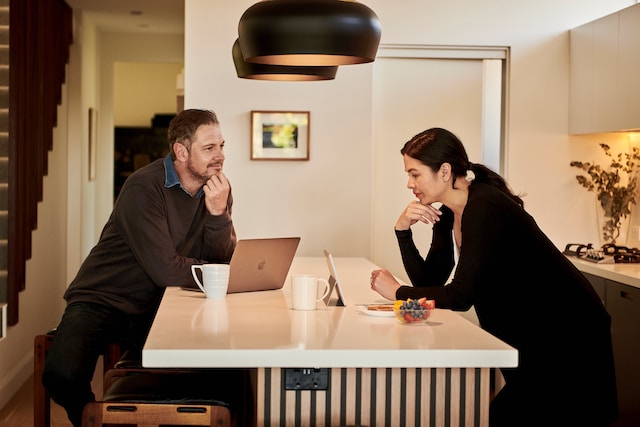Welcome to the world of creative industries, where imagination meets innovation and workplace flexibility is not just a buzzword, but a way of life. In this fast-paced era of digitalization, where remote working has become the new norm, creative industries have emerged as trailblazers in embracing flexible work arrangements. From advertising agencies to design studios and media houses, these dynamic workplaces are leading the way in redefining traditional work structures by prioritizing productivity over presence. So let’s dive into how workplace flexibility is transforming the landscape of creative industries!
What are creative industries?
Creative industries refer to businesses that are engaged in the creation, production and distribution of artistic and cultural goods or services. These industries rely on creativity, innovation, and originality as their core elements. They include sectors such as advertising, architecture, arts & crafts, design (graphic/industrial/fashion), film & video productions, music & performing arts, publishing (print/digital), software & computer games development among others.
The creative industry has become a vital part of many economies around the world due to its significant contribution to employment opportunities and economic growth. It is an ever-changing sector where new ideas are constantly being developed to meet consumer needs and demands.
Moreover, creative industries encourage individuals with various talents from diverse backgrounds to come together in pursuit of common goals – creating innovative solutions through teamwork. This collaboration helps foster a positive work environment that cultivates creativity while promoting individuality.
Creative industries provide a fertile ground for talented individuals who want to use their passion for artistry in a professional setting while fostering an atmosphere of flexibility that enables them to achieve optimal productivity levels while maintaining work-life balance.
Workplace flexibility in the creative industries
Creative industries are known for their innovative and dynamic work environments. With the advent of technology, these industries have embraced workplace flexibility to stay ahead in the game. The creative industry is an ever-evolving field that relies heavily on collaboration and teamwork, making it conducive to flexible work arrangements.
One way that employers in creative industries have implemented flexibility is through remote working options. This allows employees to work from anywhere they choose, which not only saves time but also helps them achieve a better work-life balance. Another form of flexibility is job sharing where two or more employees share one position with each other.
The ability to set your own schedule and break up your day into manageable chunks has resulted in higher productivity levels among creative professionals. By offering flexible hours and allowing workers greater autonomy over their schedules, companies can foster a culture of trust between employers and employees.
Flexible working practices also benefit businesses as they enable access to a wider pool of talent who could be based outside major cities or countries entirely. It’s no longer necessary for creatives based in rural areas or those with caring responsibilities to travel long distances every day; instead, they can contribute remotely from wherever suits them best.
Workplace flexibility has revolutionized the way we work today by enabling us all to create our ideal professional lives while maintaining personal commitments outside of work too!
The benefits of workplace flexibility
The benefits of workplace flexibility are numerous and significant. For employees, it allows for a better work-life balance, which can lead to reduced stress levels and increased productivity. It also provides the opportunity to work from home or remotely, saving time and money on commuting.
For employers, offering workplace flexibility can increase employee satisfaction and retention rates. It also enables companies to tap into talent outside of their local area since they can hire individuals who live in different locations but still contribute effectively.
Workplace flexibility promotes diversity within the workforce by accommodating various needs such as childcare responsibilities or medical appointments. This creates a more inclusive environment that values individuality.
In addition to these benefits, workplace flexibility has been shown to reduce absenteeism rates while increasing job satisfaction levels among employees. Allowing people greater control over when and where they work leads to higher engagement levels overall.
Introducing flexible working arrangements is an excellent way for organizations to enhance employee well-being, attract top talent and improve business performance through increased productivity and innovation.
The challenges of workplace flexibility
Workplace flexibility has its fair share of challenges in the creative industries. One of these is maintaining effective communication among team members who may be working remotely or on different schedules. This can lead to miscommunication and delays in project completion.
Another challenge is ensuring that all team members have access to the same resources and tools necessary for their work, regardless of where they are working from. This requires careful planning and investment in technology infrastructure.
In addition, it can be difficult for managers to monitor productivity when employees are not working within a traditional office setting. There must be trust between managers and employees, as well as clear expectations set regarding work hours and deadlines.
Moreover, workplace flexibility can take a toll on employee mental health if boundaries are not established between work and personal life. Working from home or outside traditional office hours can blur the lines between professional responsibilities and personal time leading to burnout.
While there are challenges associated with workplace flexibility in creative industries such as communication, resource allocation ,productivity monitoring,and employee well-being but employers who find ways to overcome these obstacles will reap the benefits of a happier workforce with greater creativity potential.
How to make workplace flexibility work for you
Making workplace flexibility work for you requires intentional effort and a willingness to adapt. Here are some tips on how to make it happen:
Firstly, establish clear communication with your manager or team leader about what kind of flexibility you need and when. Be specific about the hours, days or location that would allow you to be most productive.
Secondly, use technology to stay connected with your colleagues while working remotely. Schedule regular check-ins via video conferencing or instant messaging tools so that everyone is up-to-date on projects and deadlines.
Thirdly, set boundaries between work and personal time by creating a designated workspace at home or establishing dedicated office hours if working flexibly in the office.
Fourthly, prioritize self-care by taking breaks throughout the day and stepping away from work during non-working hours. This will help prevent burnout and ensure that you’re able to perform at your best.
Embrace a growth mindset by being open-minded to new ideas and approaches for achieving success while working flexibly. Stay curious and continue learning as you navigate this new way of working.
By following these steps, workplace flexibility can become an effective tool for balancing productivity with personal needs.
Conclusion
Workplace flexibility is becoming increasingly important in today’s world, and creative industries are leading the way in embracing this trend. By offering flexible work arrangements, these companies are able to attract top talent and retain their employees for longer periods of time.
While there are certainly challenges associated with implementing a flexible work policy, the benefits far outweigh any potential downsides. From increased productivity to improved employee morale and better work-life balance, workplace flexibility has become a key component of success in the modern business world.
As more companies begin to recognize the importance of workplace flexibility, we can expect to see even greater innovation and growth within the creative industries. So whether you’re an employer or an employee looking for new opportunities, remember that embracing change and adapting to new ways of working can be your key to success!




